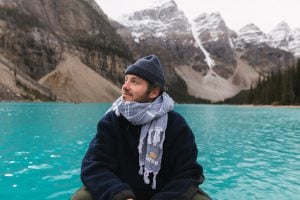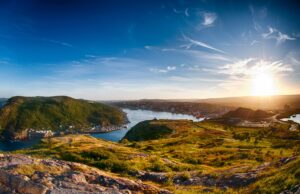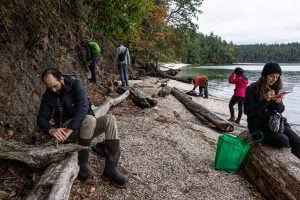In the heart of the city is Zealandia, the world’s only fully fenced eco-sanctuary. It feels like Jurassic Park, except the terrifying dinosaurs are replaced by curious native birds.
Getting to the sanctuary is easy; you can take a free shuttle from the downtown visitor centre, hop on a public bus or, if you have access to your own vehicle, make the short, scenic drive.
The park’s Māori name, Te Māra a Tāne (“garden of the forest and bird god”) is fitting. A five-minute wander into the park and you’ll forget you’re in the city.
The main path winds around a central lake, through native forest and along a dam. It offers easy viewing of bird species including the world’s largest parrot, the kākā, or the colourful, chicken-like takahē. Guides along the path can also point out ancient tuatara (an endemic lizard-like reptile), the closest you’ll get to seeing a dinosaur in real life.
The real magic, however, lies off the loop track on the more rugged side trails. For the adventurous, there’s a day hike that circles the entire 225-hectare reserve. My trek along the Fantail Track was guided by several inquisitive robins, which flitted from branch to branch in front of me. The daring can crawl into one of the caves to see spindly, cricket-like wētā clinging to walls.
To date, the sanctuary has reintroduced 18 native species to the area, a third of which haven’t been seen on the mainland for more than a century. If you want to fully immerse yourself in New Zealand’s past, visit the interactive exhibit at the park’s entrance.
The $19.50 NZD entrance ticket is a bargain and is good for a free return trip the next day.
Escape to an inner-harbour island








